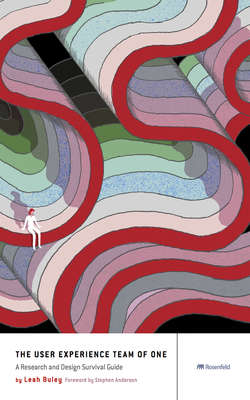Читать книгу The User Experience Team of One - Leah Buley - Страница 23
На сайте Литреса книга снята с продажи.
Get to Know Your Users
ОглавлениеOnce you’ve identified some opportunities and developed a rough plan, your next priority should be to get firsthand experience with users, talking with them and learning about their needs. Users are at the core of user experience. Simply put, they are the people who use your products. It’s important to keep these people in mind when designing products because they’re the ones who will endure firsthand the consequences of myriad design decisions.
Good products eventually become somewhat invisible, sinking into the background as users achieve a kind of flow where they’re actively and fluidly doing whatever the product is supposed to make possible. Not “posting to a wall,” but responding to a friend. Not “formatting a Word document,” but writing. If you’re a product maker, this is nirvana. It’s also darned hard to accomplish. In fact, you’re virtually guaranteed to get some of it wrong—especially at first—which is why the field of user experience places a big emphasis on understanding user needs and testing the design of products with users. This emphasis on connecting with users is so essential that it’s one of the core tenets of user experience: design products for and with users.
Personally I dislike the word user. I much prefer to call them, simply, people. That helps me remember that it’s the people all around us that we’re designing for. But to design for people, you have to know something about them. That means you must resist the tendency to treat them as flat statistics derived from market segmentation and strive to understand them as the complex, erratic animals that they all are. Eric Ries of the Lean Startup movement has a great one liner that sums it up perfectly: “Data are people, too.” This requires you to suspend what you know and adopt someone else’s perspective long enough to feel their pain and envision better alternatives (see Figure 2.10). That’s harder than it sounds, which is why it’s essential that you take time to actually get to know real users.
FIGURE 2.10 A well-designed product enables a user to accomplish his goal efficiently and without confusion or disruption. When a user encounters a breakdown in the system, it really shows.
It’s shocking how many people say they’re practicing user-centered design, but rarely talk to actual users. Don’t be one of them. Real UX teams of one are committed to knowing not just “users” in the abstract, but the people who really use their products. It pays off. Jared Spool of User Interface Engineering has done research that shows that the amount of face-time a team has with end users directly impacts the quality of the product. You can read more about the optimal number of user “exposure hours” here: www.uie.com/articles/user_exposure_hours/. So it’s very important to start reaching out and talking to your actual users. Here’s how to do it:
• Figure out what you know (and what you don’t). Learn how to gather available user data and use it as a tool to guide your work in Chapter 6. Specifically, you can use the “Proto-Personas” method to turn users into people.
• Do guerilla research. Even if you can’t get formal support to do it, there are a host of lightweight ways to connect with and put designs in front of actual users. The “Guerilla User Research” method (Chapter 6) is a great starting place.
